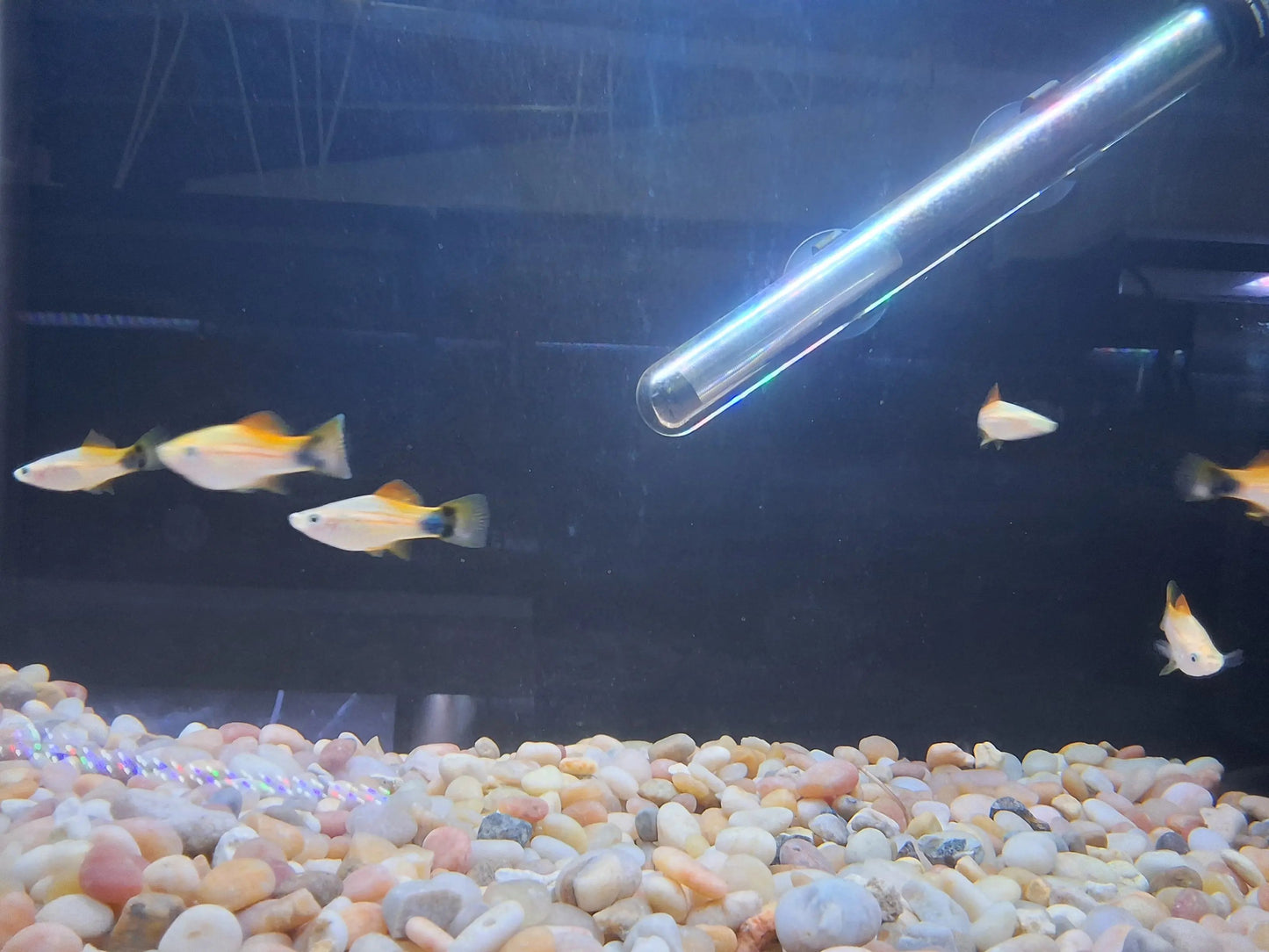Pineapple Mickey Mouse Swordtail (Xiphophorus hellerii) – Bright, Peaceful, and Full of Character
Pineapple Mickey Mouse Swordtail (Xiphophorus hellerii) – Bright, Peaceful, and Full of Character
Low stock: 6 left
Couldn't load pickup availability
🍍🐭 Pineapple Mickey Mouse Swordtail (Xiphophorus hellerii) – Bright, Peaceful, and Full of Character
The Pineapple Mickey Mouse Swordtail is a colorful and playful Xiphophorus hellerii variety that combines the golden-orange glow of the Pineapple Swordtail with the distinct “Mickey Mouse” marking near the tail fin. This peaceful livebearer adds cheerful color and constant movement to community aquariums.
Hardy and beginner-friendly, these fish are easy to care for and thrive in small groups. Males feature the trademark “sword” tail extension, while both sexes display the signature black Mickey Mouse spot on their caudal peduncle.
🌟 Key Features
- 🍍🐭 Unique Color & Pattern: Golden-orange body with red fins and the iconic Mickey Mouse tail mark
- 🗡️ Distinctive Swordtail Fin (Males): Elegant lower fin extension adds beauty and grace
- 💧 Peaceful Temperament: Excellent for community aquariums
- 🌿 Easy to Breed: Livebearer species that produces fry regularly
- 💪 Beginner-Friendly: Hardy and adaptable to various freshwater conditions
- ✨ Fun, Family-Friendly Favorite: Bright, active, and engaging to watch
⚙️ Care Guide
- Scientific Name: Xiphophorus hellerii
- Common Name: Pineapple Mickey Mouse Swordtail
- Adult Size: 4–5 inches
- Tank Size: Minimum 20 gallons
- Water Temperature: 72–82°F
- pH: 7.0–8.0
- Diet: Omnivore – flakes, pellets, frozen brine shrimp, and spirulina-based foods
- Behavior: Peaceful; thrives in groups
- Tank Mates: Guppies, mollies, platys, corydoras, tetras, and snails
❓ FAQ
Q: Why are they called Mickey Mouse Swordtails?
A: Because of the fun, round black “Mickey Mouse” spot near the base of their tail fin!
Q: Are they good community fish?
A: Yes! They’re peaceful, colorful, and get along with most other small freshwater species.
Q: Can they breed easily?
A: Absolutely — as livebearers, females give birth to fully formed fry that can be raised in a separate nursery tank.



